It’s a long way from photographing wet cans in an alley to the abstraction you see here. The start was a recent rainy day and photography in the recycle bin in the alley next to our kitchen door.
View this image larger.
Before I get to the steps in the progression, let me say that I’ve noticed a pattern in my work of moving from a literal subject to an abstraction, with many variations along the way. Some examples: Oakland of My Mind; From Architecture to Fantasy; Stove Top Abstractions; Masked Avenger; Changes; Cherry Medley; Weaving. An early version of my manifesto claiming new medium status for digital photography combined with post-processing is When is a Photo Not a Photo?
Sometimes I want to show you the beginning and the process, other times I’d rather leave it mysterious. Please let me know which of these series works for you, and which doesn’t. And whether you are interested in the process or would just like to see the beginning (the photo) or the end (the photo transmogrified).
Also, I’m thinking of offering an intensive workshop in my post-processing techniques. Basic Photoshop skills would be a prerequisite. The location would be somewhere in the San Francisco area, with dates to be determined. Please drop me an email if you’re interested, and let me know if you’d prefer a one day or weekend workshop.
Anyhow, back to the story of the tin can progression, I went out the back door to photograph flowers in the rain. On the way I spotted luminous cans waiting to be recycled.
By the way, both photos in this story are with my Nikon D300 on a tripod and my 200mm f/4 macro lens and 36mm extension tube, stopped all the way down for maximum depth-of-field. I used manual exposure metering, and erred on the side of under exposure by about 1/3 of a stop for a “proper creative exposure” and more saturated colors.
I started with this interior lid, converted to monochrome in post-processing:
View this image larger.
Next, I photographed rain drops on this red can:
View this image larger
So much for photography! The green version comes from the red, and is an inversion of the A channel in LAB color mode. The blue version comes from the green version via the Hue & Saturation adjustment slider. With all three I had an RGB triad:
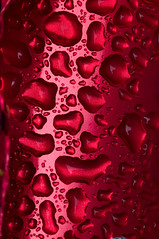
|
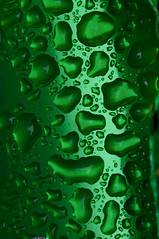
|
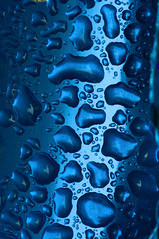
|
With the primary colors in place, it was a matter of repeated channel operations in LAB color space with conversions into RGB for Difference and Exclusion blend modes. Of course, all this could not be done without the latest Bruce Springsteen blaring on my headsets. Here’s the sequence as it flowed:
View this image larger.
View this image larger.
View this image larger.
View this image larger.
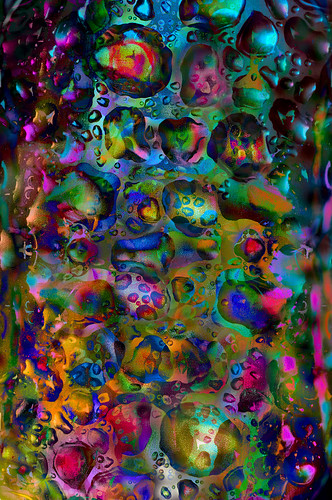
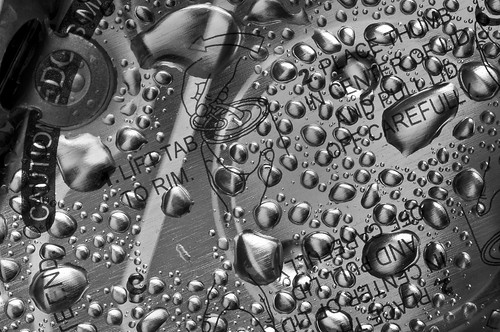
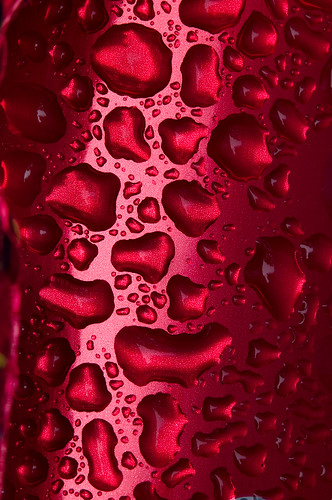

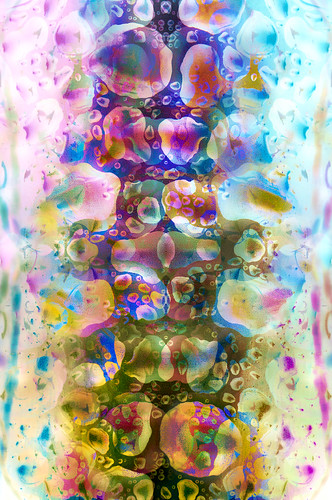
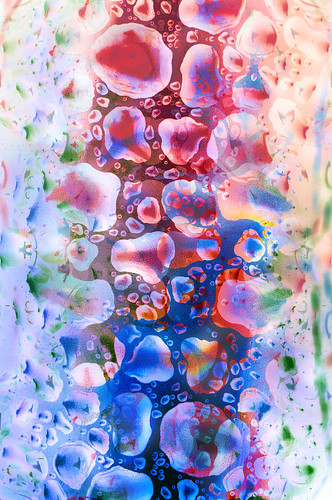
Pingback: Abstraction | Photoblog 2.0